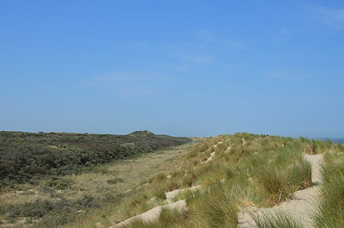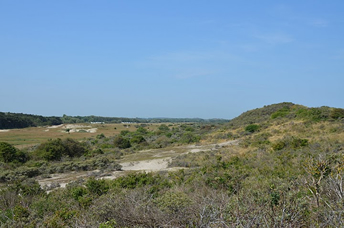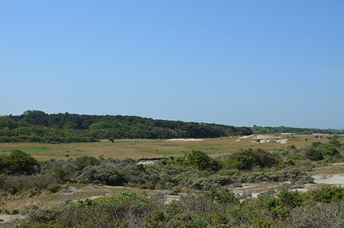Hollands Duin

Swirling dunes with protected forests, wet dune valleys and a Dutch desert. A stretch dunes area in the middle of the Randstad. The Hollands Duin runs from Wassenaar to well north of Noordwijk. A place to enjoy the wind or to find peace after a busy day. The dunes never bore. Protected forests, open plains and wet dune valleys alternate. In some places, the sand may even dust again. In summer, the temperatures at this 'Dutch desert’ can increase significantly.

The variety and the particular location make the Hollands Duin popular with urbanites and neighbours. In order to enjoy the wind, play sports or to enjoy the silence. One moment you walk through the open dunes, the next moment through a dense forest. Outside the busy summer weekends, and the summer it’s really quiet here. An oasis of calm in the Randstad.

Bats occupy bunkers
Whoever goes walking in Berkheide collides with a stone wall. In World War II, the Germans built the Atlantic Wall here. That had to stop an attack by the Allies from the sea. Concrete ‘dragon's teeth’ and bunkers are still witnesses of this. The bunkers now serve as a place for bats to hibernate.
Early bloomers
A visit to Holland Duin is also pleasure beyond the summer. In the spring, the nightingale and the stonechat return back from the south. The latter likes to sit atop a pole or shrub. The temperature rises quickly in the dunes. The small field and the cherry therefore already blossom so early in March. In the fall, the sea buckthorn bears its striking berries. The moss is then beautiful as well. And in winter it is especially the quiet that makes the area so attractive.
Desert Climate
The temperature in summer can rise above 60 degrees Celsius on the sandy southern slopes. Whoever buries a raw egg in the sand can retrieve it boiled after twenty minutes. Dune Violets, heron ponds, bitter herbs and sand are not so afraid of heat, therefore they bloom plentiful here. They must also be able to resist cold. Just like in the desert, the temperature drops dramatically at night. On a clear summer night, it can freeze five degrees below zero.
Flora and Fauna
Pyramidal orchid is a special orchid that is rare in the Netherlands. He can be found on sunny, moderately dry spots in South Limburg, Zeeland and the dunes of Wijk aan Zee and Noordwijk. Pyramidal orchid has therewith wandered far from its native range around the Mediterranean. It blooms from late May to late July with pink flowers that stand in the shape of a pyramid. Hence the name pyramidal orchid.
Stonechat
Do you see a nervous bird that violently vigorously bounces its tail up and down and makes a sound - chuck chuck - just like two pebbles that are beaten up against each other? Chances are that it’s the stonechat. Hollands Duin is its domain. About ten percent of all Dutch stonechats breed here. In March and April they come from Africa and Asia to build a nest. In September, when the children are big enough, they fly back to their distant hibernation areas.
Characteristic plants, such as the three thistle, large thyme, dune rose, pyramidal orchid, earth star, sea buckthorn and lichens grow in the dunes. In the hollows in the dunes you can find sea beet and the thriving flowering sea kale. Exotic animals are the sand lizard, natter jack, the pond bat and the stonechat.